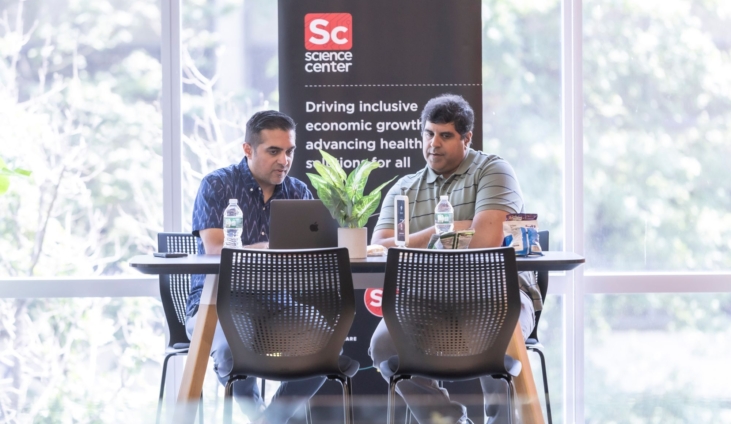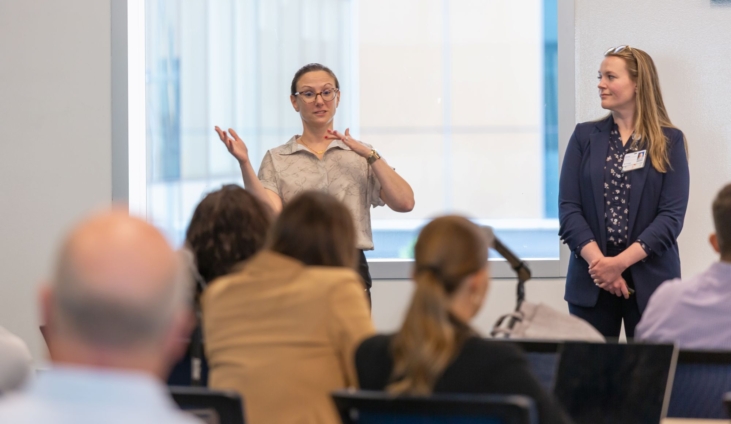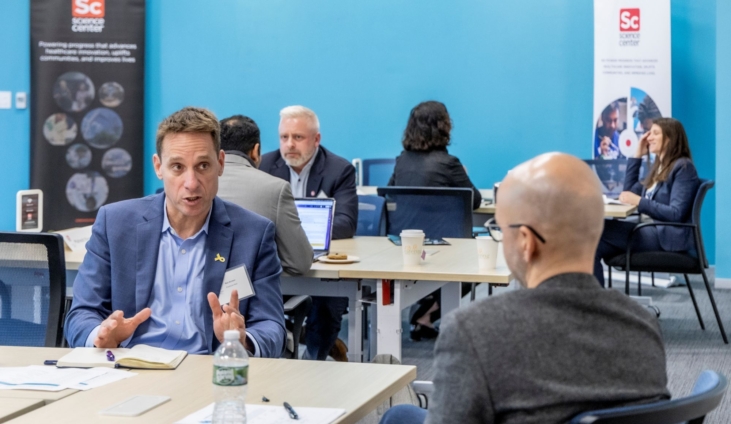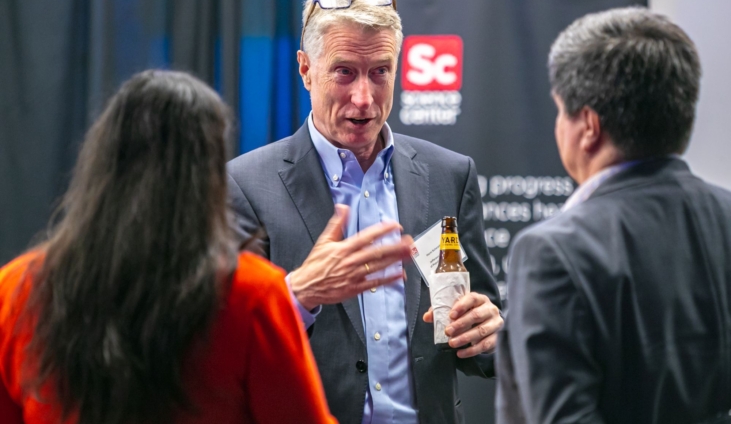Despite demonstrated clinical need, market demand, and substantial investment, around 75% of medical device and health tech startups fail to achieve commercial launch. For therapeutics, the odds are even steeper: fewer than 1 in 10 candidates successfully navigate clinical trials to receive regulatory approval. These sobering statistics underscore that innovation by itself is not enough. Without an effective go-to-market strategy, sustained investment, and the right strategic partners, even transformative technologies and therapies may never progress beyond initial development. The consequences are twofold: patients are deprived of better care, and economies are denied the growth potential that true innovation can foster.
Case in point: innovation matters only when it translates into outcomes that improve lives, strengthen economies, and expand access to care. Without translation, innovation is an idea, not a solution.
This simple yet radical idea is the Science Center’s guiding principle—and the reason we’ve existed for more than six decades. We’re committed to aligning mission with market reality, leveraging our unique strengths in convening, commercialization, and community impact to address critical gaps in the life sciences and healthcare startup ecosystem.
The gap isn’t innovation—it’s translation.
While there have always been headwinds in translating innovation into the marketplace, today’s life sciences and health technology landscape face unique structural pressures.
R&D costs remain high while reimbursement scrutiny intensifies. Health systems face margin compression and struggle to derisk early engagement. Investors are more selective, demanding clearer paths to adoption and evidence of economic value. Regulatory and data-integration complexity raise the bar on what it takes to scale. Payors wait for evidence generated too late in the cycle to meaningfully shape adoption curves. Industry (medtech, pharma, digital health platforms, strategic corporate partners) lacks structured, capital-efficient access to emerging solutions aligned with strategic needs. Startups run out of time, money, or know-how before reaching patients.
Against this backdrop, the historical model—fund broadly, hope winners emerge—is unsustainable.
The Operating System
The Translation Project is not a new program layered onto old infrastructure; it is an integrated operating thesis: move high-potential innovation into the market faster, smarter, and with a clearer line-of-sight to impact.
To understand that line of sight, we spent the last several years mapping the innovation journey through the lens of the current market—from science and proof-of-concept through pilot validation, economic modeling, adoption, and scale. We see clearly where translation fails: between promising signal and investable, adoptable product.
We engaged healthcare decision-makers—from systems and payors to providers, clinicians, and regulators—to identify the most critical evidence gaps in healthcare innovation. By identifying these “evidence deserts,” we devised a phased blueprint that empowers founders to bridge these divides and move innovations forward with clarity and purpose.
We launched the Capital Readiness Program (CRP) focused on aligning evidence generation with stakeholder expectations, integrating real-time feedback, and refining commercialization strategies beyond standard accelerator models.
In tandem with CRP, we introduced curated convenings that foster meaningful connections and advance pilot opportunities.
This intentional, data-driven approach has strengthened our ecosystem, improved capital efficiency, and increased the impact potential for emerging health solutions.
Why The Translation Project Matters Now
The Translation Project codifies the full operating system: aligned capital pathways, staged evidence development, stakeholder sequencing, and leadership accountability—implemented across programs, partnerships, and investment vehicles.
By fostering earlier collaboration across all stakeholders, we minimize the waste that typically occurs between discovery and adoption. This means clarifying evidence expectations from the outset and guiding founders to invest resources where they generate the strongest demand signals. For healthcare decision-makers, this structured approach provides a low-risk, cost-effective avenue to pilot and evaluate innovation without the burden of isolated, resource-intensive trials.
Importantly, our model is not one-dimensional. The Translation Project is designed to serve the full healthcare ecosystem—not just startups. We engage startups, investors, industry partners, health systems, clinicians, and payors, each approaching from their unique perspectives, yet all aligned toward a common goal: accelerating the path from innovation to tangible impact.
Ultimately, these market dynamics inform our strategy and highlight the urgent need for focused, targeted solutions. To meet the evolving demands facing startups, our model addresses six interconnected challenges and opportunities.
- Runway Compression: Founders must prove more with less; translation discipline extends runway by cutting avoidable iteration cycles.
- Evidence Expectations Rising: Payors and health systems demand comparative and economic data earlier; our model scaffolds that work upstream.
- Strategic Partnership Fatigue: Large organizations are inundated with startup approaches; curated translation pathways save evaluation bandwidth.
- Regional Advantage: Philadelphia’s 100+ hospitals and 7 medical schools provide unique pilot opportunities that are rarely coordinated for startups. We connect founders directly to these assets.
- Mission Alignment: As an innovation intermediary, our value is realized only when ideas reach patients, create jobs, and strengthen economic mobility. Translation is the shortest route to mission metrics.
- Financial Sustainability. The world does not need another accelerator program. What it does need is a value-added partner and an ecosystem eager to invest in moving innovation to impact.
When we lower the barriers to translation, capital flows more efficiently, stakeholder confidence rises, and—most importantly—patients experience real, measurable improvements in care. Join us in redefining what’s possible for healthcare innovation. Together, we can turn promising ideas into transformative solutions locally and globally.
Interested in learning more about the Translation Project?
Connect with us to learn how we can work together to accelerate impact.








